Saturn’s Two-Faced Walnut Shaped Moon Iapetus
The Yin And Yang Moon
Iapetus is the third largest moon of Saturn and the largest known moon in the solar system not to be rounded into a sphere by its gravity! Discovered in 1671, Iapetus has a distinctive ‘two-tone’ appearance unlike any other moon, due to its dark leading side and bright trailing side. Iapetus’ heavily cratered surface is also dominated by its unexplained 10 km high equatorial ridge giving the moon a walnut-shape!
Fast Summary Facts About Iapetus!
- Discovered: October 25th 1671, by Giovanni Cassini
- Name: From Greek mythology, Iapetus is the mythical brother of Kronus
(Kronus in Roman is Saturn). Also designated as Saturn VIII. - Size: Diameter of 1,470 kilometres (913 miles)
- Moon Rank: 11th Largest in the solar system
- Orbit: Prograde and Circular
- Orbital Inclination: 15.47° (to Saturn’s equator)
- Average Orbit Radius: 3,561,000 km (2,213,000 miles)
- Orbital Period: 79 Days, 8 Hours
- Orbital Speed: 3.26 km/sec
- Density: 1.09 g/cm3
- Surface Temperature: -183 to -143°C (90 - 130 K)
- Surface: Water-ice & Dark material
More Fun Facts About The Strange Moon Iapetus!
- Iapetus was discovered in 1671 by Giovanni Cassini, one of four moons he discovered along with Tethys, Dione and Rhea.
- Following John Herschel’s suggestion in 1847 to name Saturn’s moons after the mythical brothers and sisters of Kronus (equivalent in Greek of the Roman god Saturn) the name Iapetus was given to the moon after the Titan Iapetus.
- Some astronomers also refer to Iapetus as Saturn VIII; being the 8th major moon from Saturn.
- When Giovanni Cassini discovered Iapetus he noted that he could only see the moon on one side of Saturn. He concluded that Iapetus must have one dark side and one light side.
- Giovanni Cassini also correctly guessed that Iapetus is ‘tidally locked’ to Saturn as it orbits; meaning the same face of the moon always faces Saturn despite its distant orbit! Earth’s Moon is also tidally locked to Earth!
- Iapetus is the third largest of Saturn’s moons (only Rhea and Titan are bigger) and the largest moon in the Solar System not in hydrostatic equilibrium.
- The moon's density is relatively low, about 1.09 times that of liquid water. This suggests Iapetus is 4/5th water-ice and 1/5th rocky material!
- Due to Iapetus’ unexplained inclined orbit, it is the only major moon around Saturn from which the rings can be seen. All the other large moons are side on to the thin rings.
- Iapetus is heavily cratered, with the largest known crater being the 580 km wide Turgis Crater; which is 40% of the moon's diameter!
- The Voyager I and Voyager II encounters during 1980 and 1981 validated Cassini's original observations revealing a trailing hemisphere lighter in colour.
- The exact reason for this brightness contrast isn’t known for sure; however one theory is that Iapetus may be collecting fine dark particles on its leading hemisphere from the more-distant moons (like Phoebe). This creates a positive thermal runaway process as the darker side heats and causes lag (dark residue from the sublimation of water ice on the surface), to concentrate while the brighter water-ice migrates and is deposited on the lighter hemisphere.
- A second unique feature of Iapetus is its 10-kilometre high mountain chain circling the moon's equator which makes the moon look like a walnut! Scientists speculate such an unusual feature was either formed when Iapetus rotated much faster, or the ridge is debris which has collapsed on to the moon from a failed ring. Can you think of another reason how these mountains could have formed?
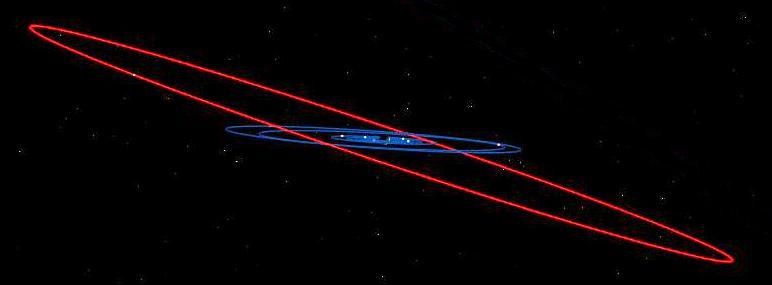
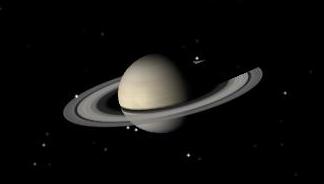
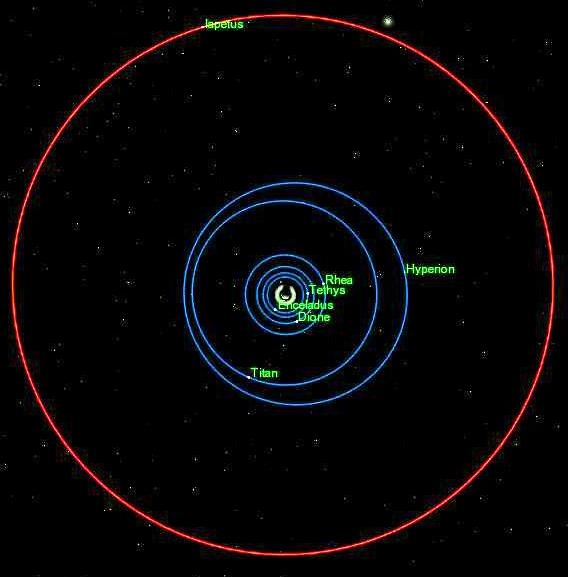
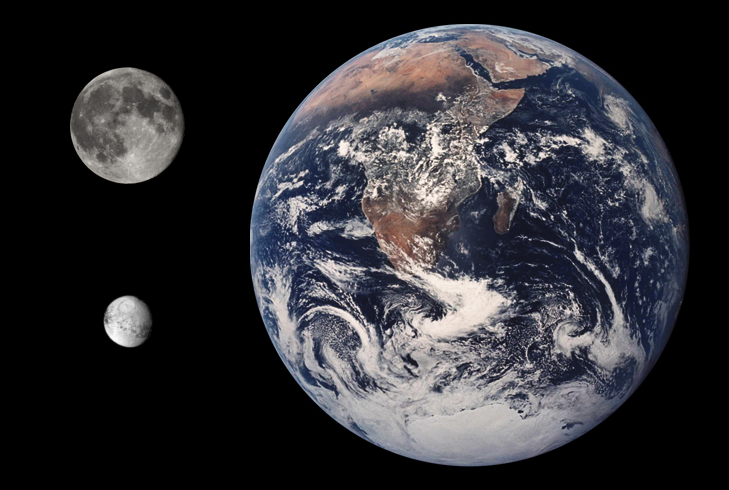
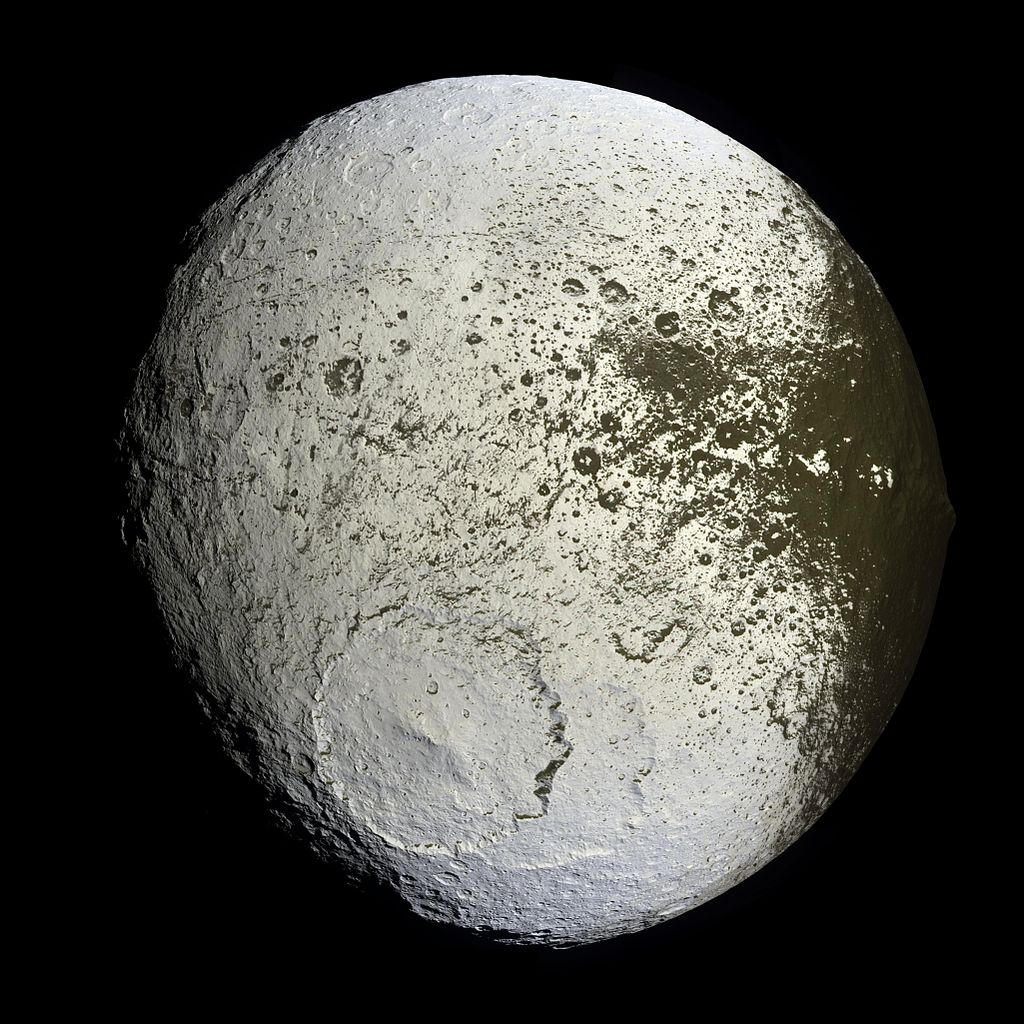
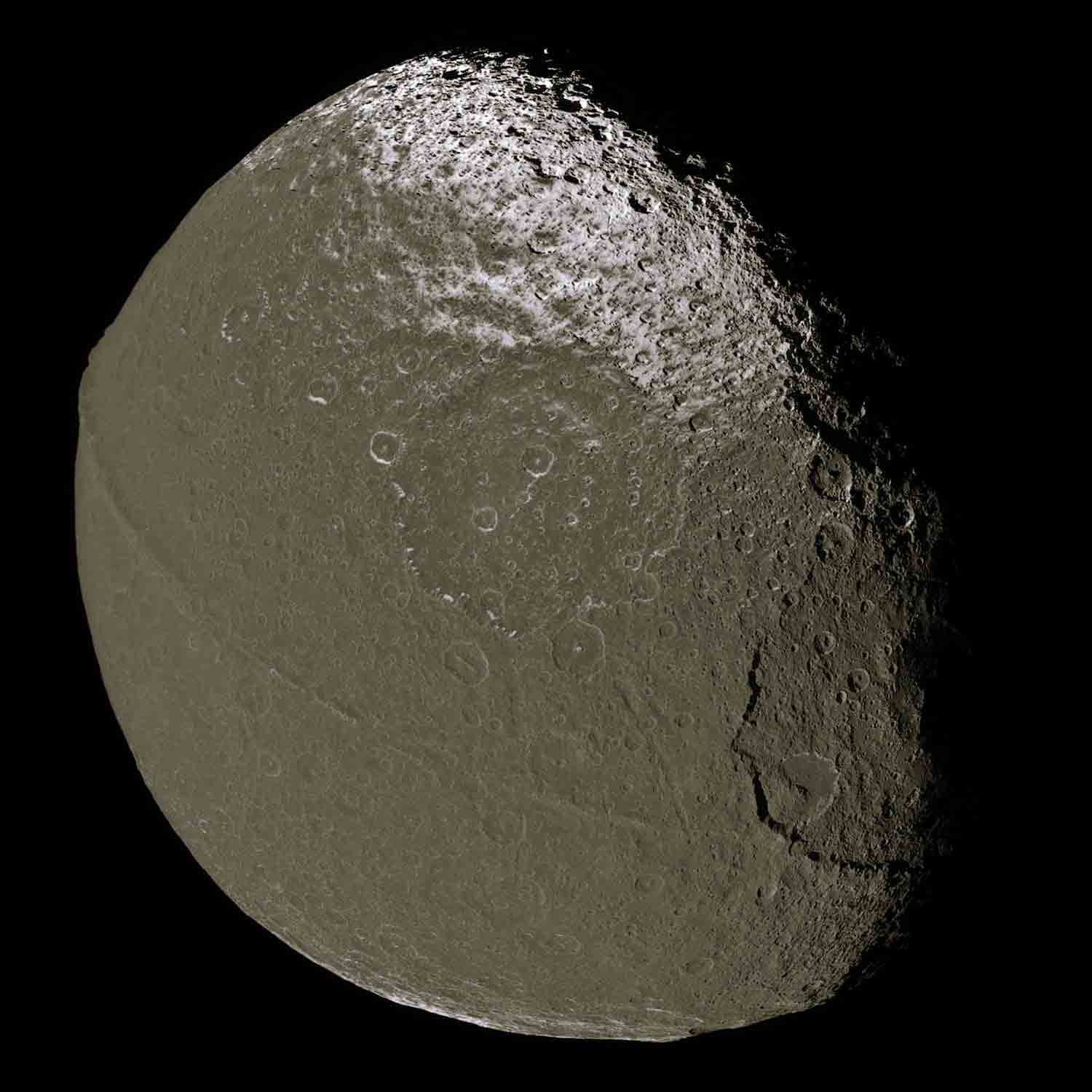
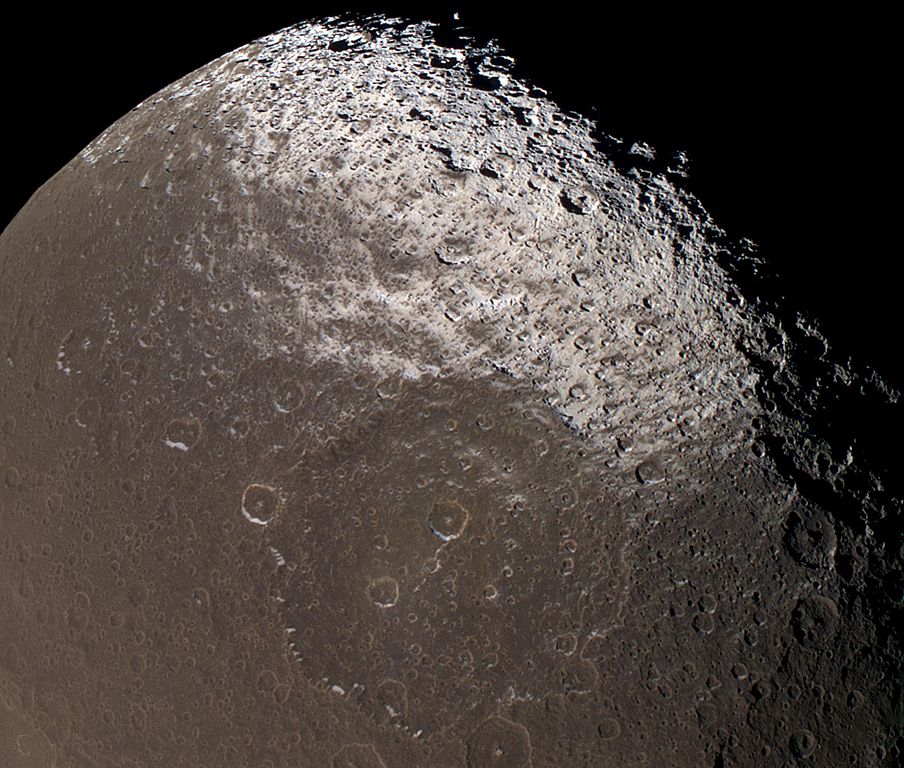
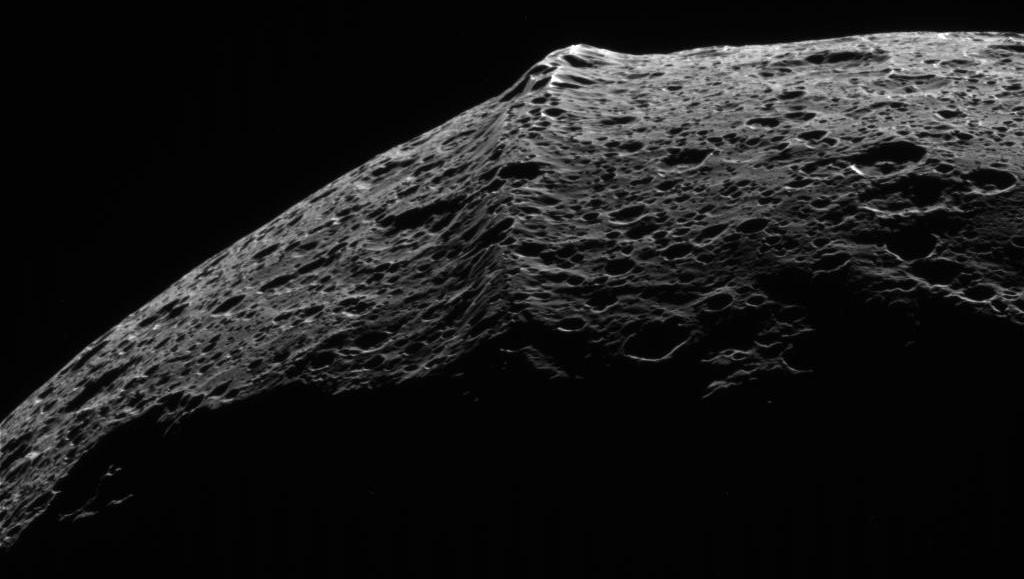
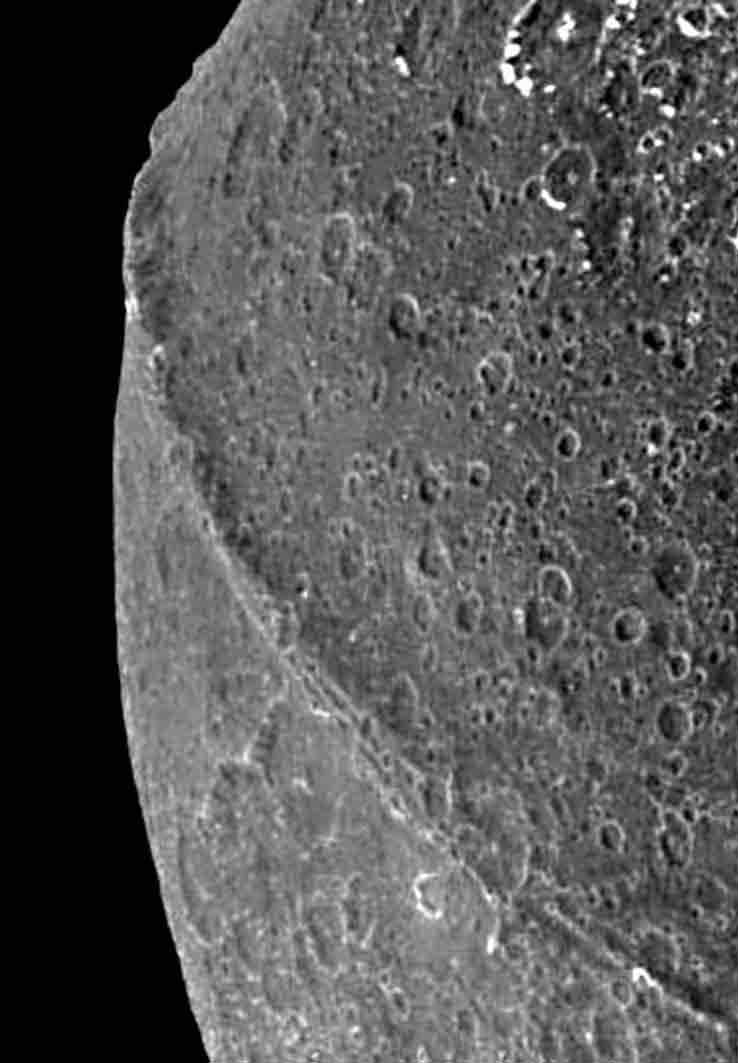
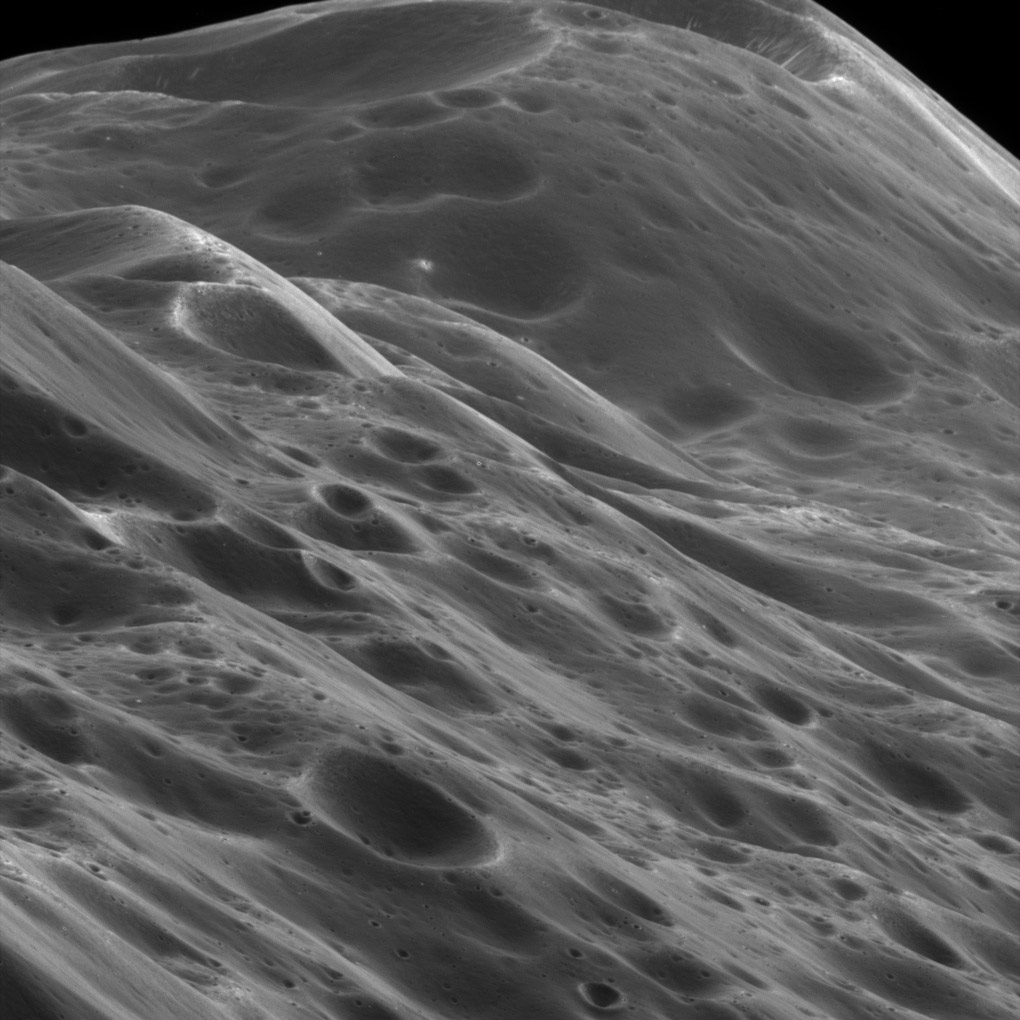
Iapetus's orbit
View from Iapetus
Iapetus's orbit
Relative Size
Engelier Crater
Walnut Shaped Iapetus
Contrasting Surface
Mysterious Ridge
Iapetus Ridge Closeup
Mountainous Ridge














